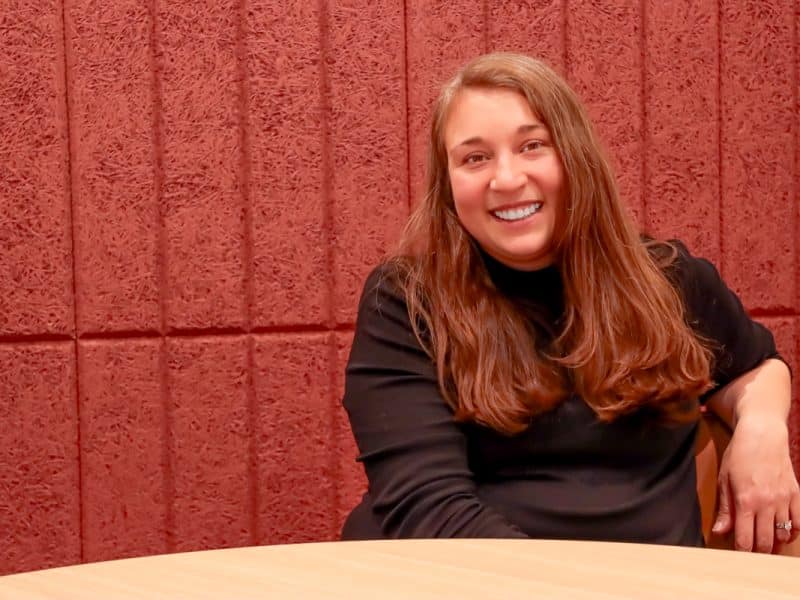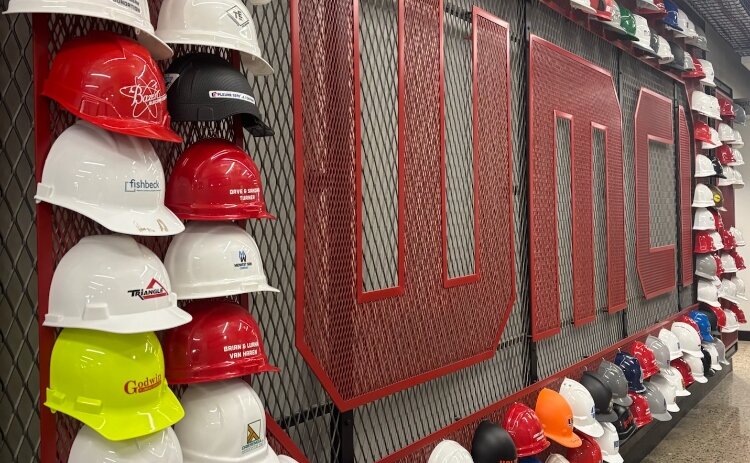G-Sync: Growing pains are natural (and so is healing them)
The act of listening in a city still has incredible power. Publisher Tommy Allen looks around and finds plenty of opportunities for us to engage more fully with each other in our neighborhoods.

It is no secret to our long-time Rapid Growth readers that we have evolved over our 11 years. And so has the city in so many ways since we first arrived in 2006.
Proof of our growth is not just evident as you navigate the city today, but also within the U.S. Census Bureau numbers, which reflect the population growth that is fueling our expansion in nearly every area of the city and county.
Yes, Grand Rapids might be the second largest city in the state, but when it comes to overall growth, both in the city and our Greater Grand Rapids region, we are consistently number one.
According to the census since 2010, Detroit’s population has dropped 6 percent, while Grand Rapids’ population has grown from 188,122 in 2010 to 196,445 in 2016 (or a whopping 4.4 percent population increase.)
This growth has also been felt in our surrounding communities within Kent County as the total growth from 2010 to 2016 has been 6.5 percent or approximately 40,000 people.
And yet, it is fitting to say that with this much influx happening in our region there are certainly to be growing pains.
Recently, MLive published a story that illustrated such pains. In the piece “Liquor store owners stand firm as $42M Diamond Place goes up next door,” a neighborhood convenience store, Midtown’s The Party Cooler, a local minority-owned and -operated business at the corner of Michigan and Diamond, refused to sell to the next door developer of Diamond Place.
As with most stories these days addressing development comes those pre-formed opinions ranging from the calling for its demolition because it is old to the obligatory playing of the “gentrification” card. What is harder to determine is what to do with a city that is building for the future.
And while the noise of critics echos down familiar tracks, I have to step back and ask, “What lessons from other like-sized cities can we learn in an attempt to avoid the same mistakes some think we will eventually experience?”
For far too long, we have been told this is how it is or there is nothing you can do about it. Both are dead end statements that remove from the dialogue the power we have to figure out our own path. And figuring out our own path is something we talk about all the time depending on what boardroom you stumble into these days. We are the can-do, you can dream it/build it city, so why can’t we solve this riddle of growth in a time of so much social dialogue?
One thing to keep in mind—as we have seen all too often— is that social media rants rarely change our perspectives or opinions. The best indicator that we can apply locally is still a very common act that I have experienced for decades of travel in other cities, both as a tourist and as a worker.
In all my travel, the human voice in conversation with another is often the greatest tool we have to flatten the mountains of difference as we establish a shared humanity. The act of listening in a city still has incredible power.
But one area that I do take offense is when folks point out how an older or established neighborhood business looks ugly or dirty. This applying of an overlay often rooted in suburban culture or a desire for the city to be Hollywood sparkling fresh and new highlights an emerging matter for locals to take notice as folks often forget the long history to get to this moment.
Sure, when your new neighbor’s building is four stories high and towers over your space as does Diamond Place, then you have a great example of how the new can clash with the old, but with time you will be surprised how little you notice it.
The character of our neighborhoods as well as our city’s health in these well-worn spaces are often where much-needed interaction on a human scale can occur. I have always found that living in neighborhoods where you know the folks who own it or work there helps provide a grounding you cannot get from your couch as your scroll on your phone aimlessly looking at Facebook.
And in a time of new reports showcasing the negatives of spending too much time alone in substituting public spaces for social media, the need to be around others has never been greater. And lucky you, we finally have a city offering not just shiny and new but a richly unique landscape of local businesses where a vibrancy you can’t order from Grubhub is often a few steps out your front door.
The New York Times’ “Happiness Is Other People” article by Ruth Whippman shared that according to the Bureau of Labor Statistics’ Time Use Survey, “the average American now spends less than four minutes a day ‘hosting and attending social events,’ a category that covers all types of parties and other organized social occasions.”
I, for one, have found myself like many others feeling a bit empty at times after a fast/lost hour of scrolling when it could have been spent out in the public where the magic of chance encounters are awaiting your wandering heart.
Whippman goes on to write, “Study after study shows that good social relationships are the strongest, most consistent predictor there is of a happy life, even going so far as to call them a ‘necessary condition for happiness,’ meaning that humans can’t actually be happy without them. This is a finding that cuts across race, age, gender, income and social class so overwhelmingly that it dwarfs any other factor.”
So when we look at the outside and not venture into these businesses that have often survived the worst economics of our roller coaster American economy these last few years, then we deprive ourselves of truly knowing our community.
A local business like The Party Cooler often has made hard decisions in choosing to stay (i.e. refusing to sell) after years of existence. In the case of this business there is an opportunity to grow their business’s value but also their customer base. And with growth comes capital and greater chances for further investment needed to make any changes, including a new facade should the owner wish.
With Diamond Place’s soon-to-open 165 apartments (many income-restrictive) situated in an already booming neighborhood full of local pubs, restaurants right-sized for the community, and a host of newer small businesses emerging all the time, these new residents are about to experience something truly unique in our city: a vibrant community full of amazing character and personality.
What I am hoping for us as a city and county is that we can get to a place where more one-on-one dialogue can occur more authentically within our neighborhoods. We see signs of it everywhere beginning to take hold as some pockets of the city are seeing neighbors, developers, and government employees are working together these days. Some will get it right and others will fail. But the work of open engagement with listening on all sides is still the best city-building practice I’ve ever witnessed.
Embracing our communities and all of its citizens means that we get a chance to hit the reset button, allowing trust to be restored as real dialogue is heard from all sides, deepening our experience, furthering our understanding, and changing us through the process. This present tension moment is full of growing pains, but the human voice in conversation is still one of the best beautiful levelers offering to lift us all up.
It is an exciting time to be alive because of the opportunities a city like ours is beginning to offer those who want to be a part of this city. If we want to truly banish the word gentrification and work to build a city welcoming all, then we have to start acting like neighbors and not as colonialists.
Let’s keep the dialogue going, Grand Rapids.
The Future Needs All of Us.
Tommy Allen
Publisher
Not everything in the city is serious all the time, so visit G-Sync Events to catch a few distinct happenings within our city.








